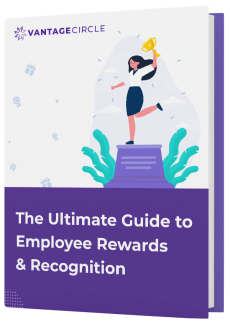A Brief Guide On Dealing With Employee Discipline

Employee discipline is the force that prompts individuals or groups to observe rules and regulations put forward by the organization.
Discipline remains a prerequisite for anyone's success, including a company. A company where the behavioral issues of its employees go unaddressed will find itself facing various losses. Productivity, morale, and its very core values are bound to suffer.
Yet, the usual disciplinary problems are common workplace occurrences. So, it is more about how you decide to approach those problematic employee behaviors by setting an example for other employees to follow.
Progressive Discipline
The approaches to discipline might vary for every company. But, progressive discipline is one aspect that works.
Progressive discipline is a disciplinary process where severe steps are taken after an employee cannot rectify their performance.
There are many reasons why progressive discipline is ideal for a workplace environment.
- Employees are made aware of their shortcomings and problems.
- Employees know the expectations from them.
- Instant improvements are not expected.
- A transparent and systematic process.
- Results are measurable and reviewed.
- The data can help to identify problem areas.
The purpose of discipline is not to punish employees. Instead, the effective field is when people are made aware of leading a life that honors the fact that rules were set for a reason.
The "Hot-Stove Rule" is an excellent example of imposing disciplinary action without generating resentment among employees. It forms an analogy between touching a hot stove and undergoing discipline. Exactly like touching a hot stove, your discipline should be immediate and consistent.
Naturally, employees might get deviated from time or time. As a leader or human resources professional, your role is to guide them through the entire disciplinary procedure.
Let's have a look at how to enforce employee discipline easily and effectively.
5 Ways To Address Employee Discipline
Employee discipline impacts not only workplace culture but employee performance as well. Thus, to ensure smooth business outcomes, you must establish a plan to address any work violations. Here's how:
1. Communicate Rules And Regulations
The right communication measures can solve half of the problems in regular workplaces, including effective discipline.
Employees must know how their behavior might violate the rules and regulations. Therefore, it works as a safeguard for both you and your employees.
The employees get a broader picture of what is expected of them. At the same time, the employers are protected from any future accusations of not giving employees a head's up about any disciplinary problems.
To clearly communicate the disciplinary purposes, a human resources manager should follow these steps:
- Give your new hires a copy of the rules and regulations on their first day.
- Hold a meeting to communicate the importance of discipline verbally. In addition, share the outcome of poor behavioral issues.
- Ask employees to send any questions or problems directly to you or their managers.
- Ensure a feedback culture. Where employees can communicate any workplace issues that affect their performance and efforts.
2. Verbal Counselling
Human resources or managers use verbal counseling to inform employees about their poor performance or behavior and the need for improvements. For minor issues, such as arriving to work late, this is the only step required from your side.
The human resources manager should have a private one-on-one session with the employee to discuss the behavioral issues. Human resources should determine if the employee is aware of the problem and justify their behavior or performance.
As appropriate, the human resources manager should guide the employee through the process or help him/her resolve the issue.
Moreover, human resources should keep written documentation:
- Regarding the issue,
- The date it occurred,
- And the corrective action suggested.
Depending on the seriousness of the disciplinary actions, second verbal counseling might be warranted.
3. Written Warnings
A written warning notifies employees about their continued low-performance issues or harmful workplace behavior that have not been solved even after giving them verbal counseling.
For example, human resources have given the employee verbal counseling about not informing about being late to work. However, the employee has not taken any corrective actions.
The written warning should include:
- Information regarding the issue.
- The date on which the problem occurred.
- The desired behavior is communicated to the employee.
Human resources should meet privately with the employee to discuss the issue and provide a written warning.
Additionally, ask the employee to sign the written warning. This will indicate that they have been notified about their behavioral issues. Meanwhile, provide a copy of the written notice to the employee as well.
4. Performance Improvement Plan (PIP)
A PIP is a formal performance plan used by human resources or the manager as a final attempt in the disciplinary process to resolve a serious issue that the employee has not resolved even after multiple warnings.
The PIP gets issued for a specified period, usually 30, 60, or 90 days. It is upon the human resources or the manager to decide the length of the PIP.
5. Employee Termination
An employment termination, while being the last resort, is still a necessary option to consider. Even after being assisted by peers and managers, employees who show no improvement or personal effort point towards being let go.
Additionally, some behavioral issues (such as low-performance or workplace harassment) are so severe that it requires an instant and permanent measure such as termination.
The human resources manager should connect with the employee to discuss the termination and provide the employee's termination letter. In addition, human resources should request that another person attend the termination meeting with them as a witness.
Finally
Are there any extra steps that you would have taken to address employee discipline? We'd be interested to hear it in the comments below.

Vantage Circle is a simple AI-powered Rewards & Recognition Platform for upgrading your employee experience and engagement for better productivity.





